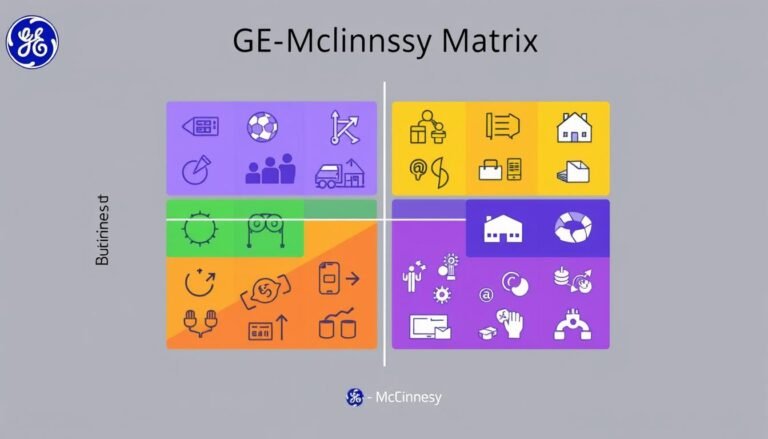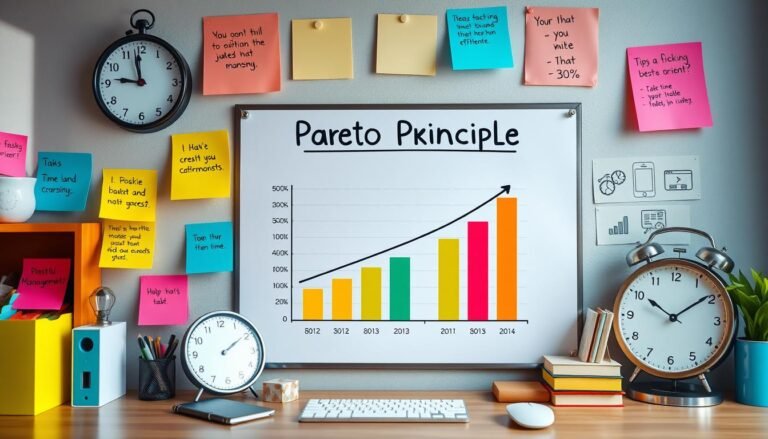Mastering Monte Carlo Simulation: A Quick Guide
Ever wondered how industries predict risks and forecast outcomes with such precision? The answer often lies in a powerful technique called Monte Carlo Simulation. This method uses repeated random sampling to get numerical results. It’s crucial for statistical modeling and risk analysis in fields like finance and healthcare. We’ll dive into its history, modern uses, and how to apply it with Python for probabilistic results.
Key Takeaways
- Monte Carlo Simulation uses random sampling to estimate outcomes in uncertain processes.
- This technique is key in risk analysis across many industries.
- Using historical Throughput data is vital for precise forecasting in Monte Carlo Simulations.
- With a good grasp of the basics, anyone can use Monte Carlo Simulation in Python.
- This simulation helps answer important forecasting questions in software development.
Introduction to Monte Carlo Simulation
Monte Carlo Simulation is a key method based on probability theory. It uses random sampling to estimate outcomes of uncertain processes. This method is great for complex systems that are hard to solve directly.
By creating many scenarios, Monte Carlo Simulation helps us understand complex phenomena. It makes risk assessment and decision-making easier in various fields.
Definition and Basic Concept
At its core, Monte Carlo Simulation uses statistical modeling to estimate mathematical functions. Random sampling is key to mimicking complex system operations. This method helps analysts find probabilities and outcomes that traditional methods can’t handle.
It’s vital in computational finance, where understanding uncertain environments is crucial.
Historical Background
Monte Carlo Simulation has roots in early statistical work by Georges Louis LeClerc, Comte de Buffon. They used random methods to estimate mathematical constants. The Manhattan Project was a turning point, using Monte Carlo to study neutron behavior in radiation shielding during World War II.
This period showed the wide application of Monte Carlo techniques in modern analytics.
Importance in Today’s World
Today, Monte Carlo Simulation tackles complex problems in finance, healthcare, and engineering. It’s used for risk analysis, forecasting, and optimization. As computers get better, Monte Carlo Simulation’s efficiency and accuracy improve decision-making.
Applications of Monte Carlo Simulation Across Industries
Monte Carlo Simulation is a key tool in many fields. It helps make better decisions by offering insights. It’s used in health, finance, and engineering, showing its value in complex situations.
Health Sector Applications
In healthcare, Monte Carlo Simulation is vital for drug development. It simulates patient outcomes in clinical trials. This helps predict how patients will respond and how to plan trials better.
It also helps in understanding risks to public health. For example, it looks at how diseases spread and the effects of toxins in food.
Financial Risk Analysis
In finance, Monte Carlo Simulation is very useful. It creates many possible stock price paths, especially for complex financial products like options. This helps in pricing these products accurately by simulating different market scenarios.
It also helps in managing risks in investment portfolios. By predicting potential financial losses, it aids in making better investment decisions.
Engineering and Manufacturing
Monte Carlo Simulation is also important in engineering and manufacturing. It helps predict how new airplane designs will perform under various conditions. This is crucial for ensuring safety.
It’s also used to improve manufacturing processes. By optimizing designs, it helps make products more efficient and maintain quality. This leads to cost savings and better resource use.
| Industry | Application | Benefits |
|---|---|---|
| Healthcare | Drug development, disease risk assessment | Improves patient outcome predictions, resource allocation |
| Finance | Portfolio risk assessment, options pricing | Enhances decision-making, predicts potential losses |
| Engineering | System reliability prediction, performance optimization | Ensures quality control, reduces operational costs |
Understanding the Core Concepts of Monte Carlo Simulation
Monte Carlo Simulation is based on key ideas like random sampling and probability distributions. These ideas help model uncertainty in many areas. Knowing them is crucial for using Monte Carlo simulations in various industries.
Random Sampling and Probability Distributions
At the heart of Monte Carlo Simulation is random sampling from probability distributions. This means creating many scenarios to see possible outcomes. For example, imagine rolling dice millions of times to see the different results you might get.
This method helps get a spread of results, important for statistics and finance. There are different types of distributions like normal, uniform, and triangular. Each one is used for specific problems, making simulations more accurate.
Monte Carlo simulations work well with different investments and financial situations. They use risk assumptions to simulate real-life scenarios.
Role of the Central Limit Theorem
The Central Limit Theorem makes Monte Carlo methods even more powerful. It says that repeated simulations tend to follow a normal distribution, no matter the original distribution. This means Monte Carlo simulations can get close to real-world probabilities with enough iterations.
Monte Carlo simulations are great for managing portfolios and figuring out if you have enough money for retirement. They show how likely you are to reach your financial goals. This shows their value in uncertain situations.
Implementing Monte Carlo Simulation in Python
Learning how to use Monte Carlo Simulation in Python is key for those into statistical simulation. This method helps measure risk and aid in making decisions across many fields. With the right Python libraries, the process gets much easier. This lets users focus more on the design and analysis.
Essential Libraries and Setup
For Monte Carlo Simulation in Python, some libraries are a must. Here are the main ones:
- NumPy: This library is key for generating random numbers and handling arrays efficiently, which is crucial for simulations.
- Matplotlib: Seeing the results is important. Matplotlib helps create detailed graphs and histograms, making data easier to understand.
- Pandas: Great for working with data, it makes handling and analyzing structured data straightforward.
Step-by-Step Code Implementation
Following a step-by-step guide makes the Monte Carlo Simulation process clear. Here’s what you do:
- Define Parameters: Set sales targets and their chances of happening.
- Generate Random Samples: Use NumPy to create possible outcomes based on past data.
- Perform Simulations: Run many iterations, like 1,000 times, for accurate results.
- Calculate Metrics: Work out commission payouts from random sales and rates.
- Visualize Outcomes: Use Matplotlib to show the spread of expected sales commissions.
Below is a table with the model’s results from running simulations:
| Sales Target | Probability Distribution | Simulated Commission Payout |
|---|---|---|
| $75,000 | 0.3 | $870,930 |
| $100,000 | 0.3 | $2,923,100 |
| $200,000 | 0.2 | Varies |
| $300,000 | 0.1 | Varies |
| $400,000 | 0.05 | Varies |
| $500,000 | 0.05 | Varies |
Case Study: Monte Carlo Simulation Examples
Monte Carlo case studies show how this method is used in different situations. They help in figuring out probabilities and looking at complex systems. This includes finance and engineering. We’ll look at how to estimate probabilities with simple models and use them in finance.
Estimating Probabilities Using Simple Models
Simple Monte Carlo examples show how to figure out probabilities. For example, they can help with waiting times in queues. By doing many simulations, we see how close the results match what we expect. This builds trust in our predictions.
This trust is key for making good decisions.
Complex System Simulations in Financial Scenarios
Monte Carlo simulations are very useful in finance. Investors can try out complex financial situations to see how markets might act. By looking at many random examples, they can see how their investments might do over time.
This helps them understand risks and make smarter choices. It gives a clear view of how investments and markets can change.
| Application | Description | Impact |
|---|---|---|
| Waiting Time Evaluation | Use Monte Carlo to model queue systems influenced by stochastic factors. | Enhances reliability in forecasting waiting times. |
| Investment Risk Assessment | Simulate market scenarios to evaluate portfolio risk. | Improves decision-making regarding risk exposure. |
| Network Performance Optimization | Telecom companies assess network performance under various scenarios. | Enhances overall network efficiency and reliability. |
| Insurance Risk Measurement | Insurers apply simulations to measure and price risks. | Facilitates accurate policy pricing and risk management. |
Best Practices for Effective Monte Carlo Simulations
Getting the most out of Monte Carlo simulations means following best practices. This includes picking the right probability distribution and using variance reduction methods. These steps help make your simulations more accurate.
Choosing the Right Probability Distribution
Picking the right probability distribution is key to simulating real-world events. Look at historical data to help choose. This ensures your simulations are as close to reality as possible. Some top choices include:
- Normal Distribution
- Exponential Distribution
- Lognormal Distribution
- Uniform Distribution
Variance Reduction Techniques for Improved Accuracy
To make your simulations more accurate, use variance reduction techniques. These methods cut down on uncertainty and give clearer insights. Here are some top methods:
- Antithetic Variates
- Control Variates
- Stratified Sampling
- Importance Sampling
By combining these techniques with the right probability distribution selection, your simulations will be efficient and trustworthy.
| Technique | Description | Advantage |
|---|---|---|
| Antithetic Variates | Pairs of dependent random variables that reduce variance. | Minimizes variance in estimates. |
| Control Variates | Using known distributions to adjust the simulation output. | Improves accuracy at reduced cost. |
| Stratified Sampling | Dividing the population into subgroups for sampling. | Ensures representation across various segments. |
| Importance Sampling | Sampling more frequently from important regions of the distribution. | Enhances efficiency in rare event simulations. |
Conclusion
Monte Carlo Simulation is key in making better decisions in finance, engineering, and risk analysis. It’s great at handling uncertainty and giving a full look at possible outcomes. This makes it a top choice for dealing with complex systems full of randomness.
Thanks to better computers, Monte Carlo simulations can now reach further and work better. They’re set to play a big role in new areas like artificial intelligence and project management. Learning about the basics and advanced methods like random sampling is crucial for success.
Using Monte Carlo Simulation helps experts spot risks, improve strategies, and forecast outcomes more accurately. It lets them run lots of simulations and understand how different things affect each other. This makes Monte Carlo a vital tool for smart decision-making in today’s complex world.
Source Links
- An Introduction and Step-by-Step Guide to Monte Carlo Simulations
- Monte Carlo Simulation — a practical guide
- Mastering Monte Carlo Simulation for Data cience
- Introduction To Monte Carlo Simulation
- INTRODUCTION TO MONTE CARLO SIMULATION
- Monte Carlo Simulation Across Industries: Real-Life Applications and Case Studies
- How Monte Carlo Simulation Can Drive Better-informed Business Decisions
- Monte Carlo Simulation
- What Can The Monte Carlo Simulation Do For Your Portfolio?
- What is a Monte Carlo Simulation?
- Monte Carlo Simulation with Python – Practical Business Python
- Monte Carlo Simulation with Python
- Monte Carlo Simulation: What It Is, How It Works, History, 4 Key Steps
- Monte Carlo Simulations, Accuracy, and Unplanned Work — A Case Study
- Monte Carlo Simulation with Case Studies:
- Making a more efficient monte carlo simulation
- Best Practices For Conducting Monte Carlo Simulation – FasterCapital
- Monte Carlo Simulation Application, and Pros & Cons | Spiceworks – Spiceworks
- What Is Monte Carlo Simulation? | IBM







